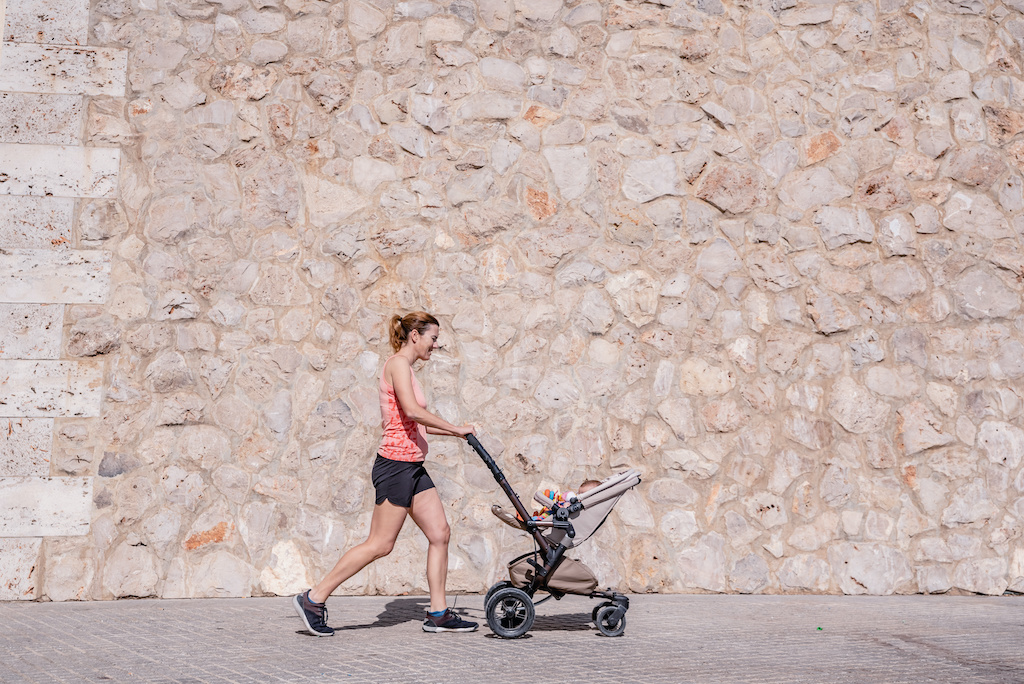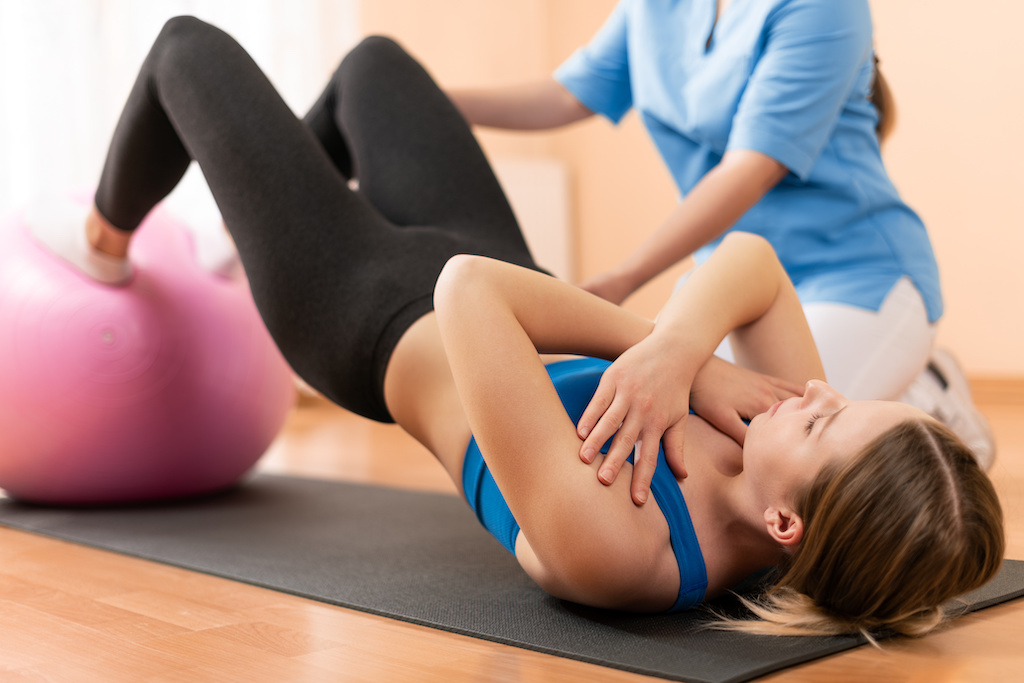After the birth of a child, do you want to know when and, more particularly, how you can get back to sport? Some prerequisites must be respected and it is recommended to only restart physical activity with gentle sports practices. While you wait to resume full training, allow yourself to be inspired by some ideas for activities that will help you take care of yourself.
Why do you have to take time before starting sport again?

After giving birth, wait a little before you resume practising a physical activity in order to allow your body to recharge its batteries and limit the risk of complications (prolapse, urinary leaks, etc.). This period of rest can range from 6 weeks to a few months: this amount of time depends on the particulars of how the labour went. In the event of an episiotomy or Caesarean section, for example, 2 to 3 months of rest may be necessary before resuming exercise.
In all cases, the resumption of ant sporting activity must be carried out in stages and under the guidance of a health professional. Usually, a postnatal visit is scheduled 6 weeks after childbirth: this is the perfect opportunity to check in with your physician and let him or her know that you want to get back to sport.
The 3 prerequisites for getting back to sport after childbirth

If the following 3 criteria are met, then you can consider a gradual resumption of your sports activities:
- You have completed your postnatal rehabilitation programme, which essentially involves working the perineum and the abdominal strap.
- After a few weeks of rest, you have recovered well, your morale is high and you feel physically fit.
- You have told your doctor about your desire to return to sport. After discussing with your health professional the activities you want to get back to doing, you have obtained their agreement and taken note of any extra advice that has been given.
What activities should you do while waiting to resume sport?

While waiting to take up sport again, you can still stay active thanks to some gentle disciplines that do not present any risks, such as walking or swimming. For example, you can take 15 to 20 minutes a day for a walk with your baby to get some fresh air, always taking into account your level of tiredness. In cases where a Caesarean section has been conducted, seek the advice of your surgeon before swimming and wait a few weeks for your healing to be complete.
Take care of yourself and relax while waiting to resume sport
Take advantage of this time of rest to take care of yourself and get used to your body once more by performing gentle stretches and breathing exercises. Postnatal yoga classes are specifically planned for the post-partum period: many postures are easy to achieve at home if you turn to the advice of a virtual coach or attend group classes where you can go with your baby. These are put on in various localities.
3 postnatal yoga exercises you can do at home
Postnatal yoga brings together various postures specifically chosen for the post-partum period. Combining gentle stretching with breathing exercises, this activity provides a relaxation period for all mothers who wish to take advantage of it prior to the resumption of an authorised sporting activity. In some cases, it is even possible to start yoga at the same time as your perineal rehabilitation with the agreement of your doctor and support from an experienced midwife. Here are 3 examples of exercises you can try at home:
- The Ananda Balasana posture is also called the happy baby: lie on your back and gently bring your bent knees up to your chest. Grasp the outer side of your feet with your hands and slowly pull your knees apart, keeping your back straight. You should then swing from side to side while breathing deeply.
- The cat-cow posture is known to promote breastfeeding: get onto all fours on your yoga mat, bring your back in with each inhalation and round your back out with each exhalation.
- A posture to strengthen the pelvic floor and support the work involved in rehabilitating the perineum: lie on your back by placing your breastfeeding pillow (or a cushion) under the head and shoulders. A second cushion will be placed under your slightly bent knees. Be sure to keep your feet flat on the floor throughout the exercise. Contract the perineum with each outward breath. When breathing in, allow your belly to expand, concentrating on your inhalation throughout.
Check out our Health & Fitness page for more advice.
